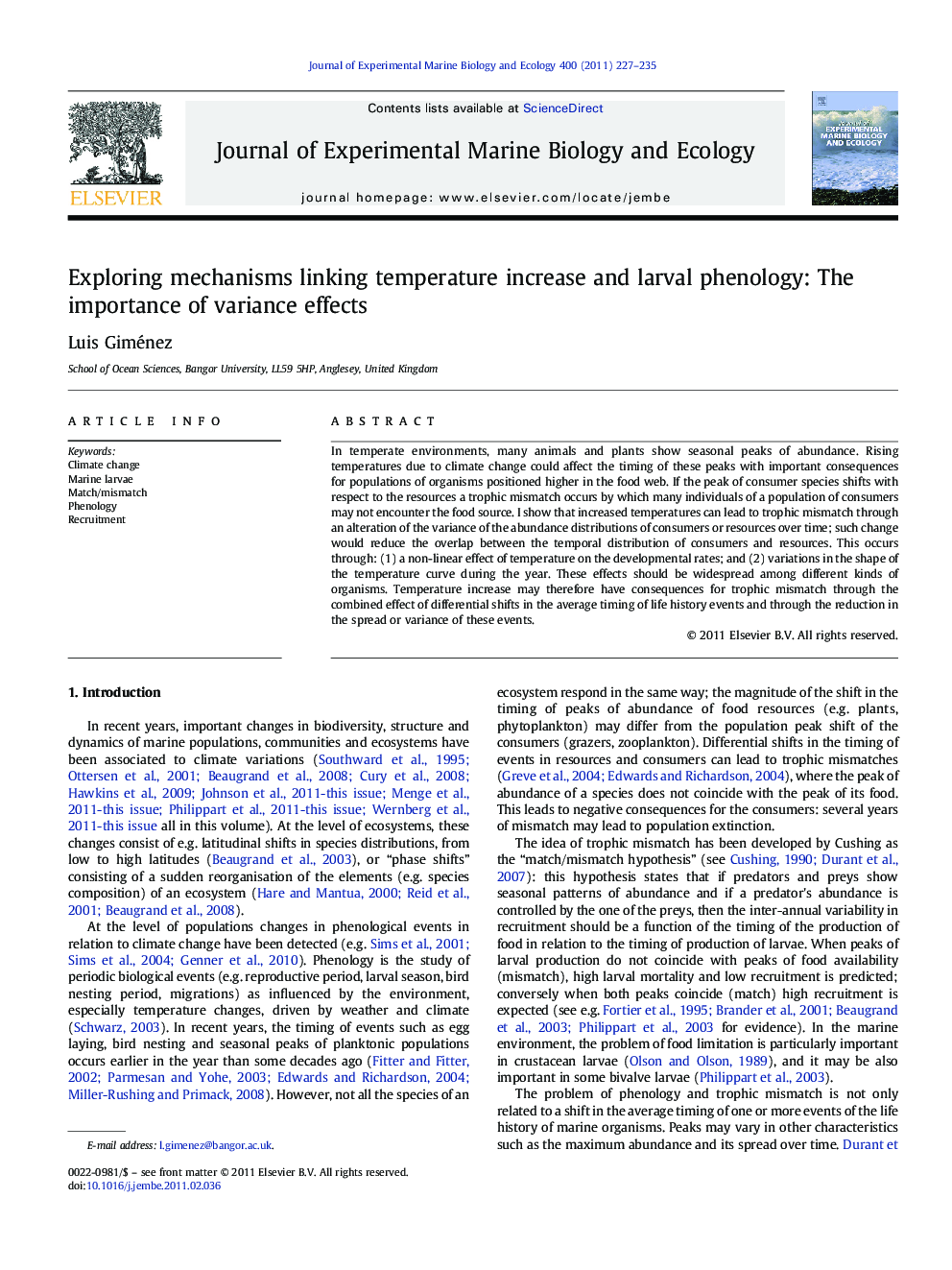| کد مقاله | کد نشریه | سال انتشار | مقاله انگلیسی | نسخه تمام متن |
|---|---|---|---|---|
| 4396351 | 1618463 | 2011 | 9 صفحه PDF | دانلود رایگان |

In temperate environments, many animals and plants show seasonal peaks of abundance. Rising temperatures due to climate change could affect the timing of these peaks with important consequences for populations of organisms positioned higher in the food web. If the peak of consumer species shifts with respect to the resources a trophic mismatch occurs by which many individuals of a population of consumers may not encounter the food source. I show that increased temperatures can lead to trophic mismatch through an alteration of the variance of the abundance distributions of consumers or resources over time; such change would reduce the overlap between the temporal distribution of consumers and resources. This occurs through: (1) a non-linear effect of temperature on the developmental rates; and (2) variations in the shape of the temperature curve during the year. These effects should be widespread among different kinds of organisms. Temperature increase may therefore have consequences for trophic mismatch through the combined effect of differential shifts in the average timing of life history events and through the reduction in the spread or variance of these events.
Research Highlights
► The spread or variance of the temporal distribution of organisms can affect the match/mismatch between production and consumers.
► Temperature affects developmental rates and the variance of these distributions.
► Temperature changes may have consequences for trophic mismatch through variance effects.
Journal: Journal of Experimental Marine Biology and Ecology - Volume 400, Issues 1–2, 30 April 2011, Pages 227–235